Performance test and review of mains to 5V 0.6A Hi-Link HLK-PM01
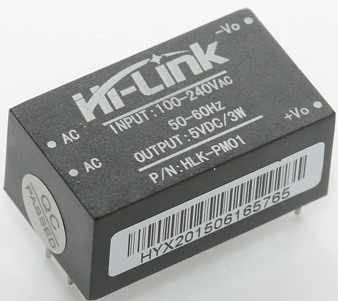
This is a rather small module that can supply 5 volt from either 120VAC or 230VAC, this makes it perfect for small projects that needs a 5 volt supply from mains.
Official specifications:
- Meet UL, CE requirements,
- All voltage input (AC: 90 ~ 264V)
- Low ripple and low noise
- Output overload and short circuit protection
- High efficiency, high power density
- The product is designed to meet the requirements of EMC and Safety Test
- Low power consumption, environmental protection, no-load loss <0.1W
- Operation Temperature: -20—+60°C
- Store Temperature: -40—+80°C
- Relative humidity: 5—95%
- Rated input voltage:100-240VAc
- Maximum input current: <0.2A
- Input current surge: <10A
- maximum input voltage: 270VAc
- Input Low Voltage Efficiency: Vin=110VAc, Output full-load: 69%
- Input High Voltage Efficiency: Vin=220VAc, output full-load: 70%
- Long-term reliability: MTBF 100000h
- Load rated output voltage: +5±0.1
- Short-term maximum output current: 1000mA
- The maximum output current for a long time: 600mA
- Output ripple and noise: 50 mVpp Rated input voltage, full load. Using 20MHz of bandwidth, the load side with 10uF and 0.1uF capacitor
- Shell maximum surface temperature does not exceed 60°C
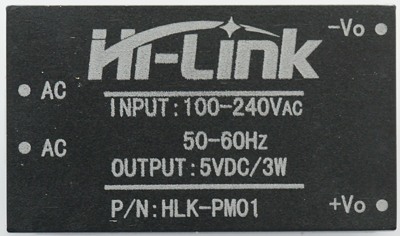

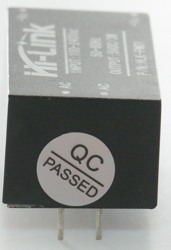
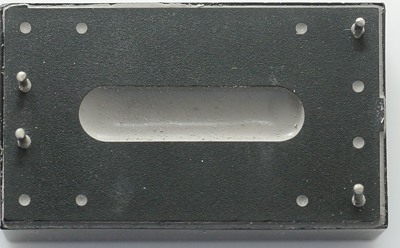
Measurements
- Power consumption when idle is 0.13 watt at 230VAC and 0.12 watt at 120VAC
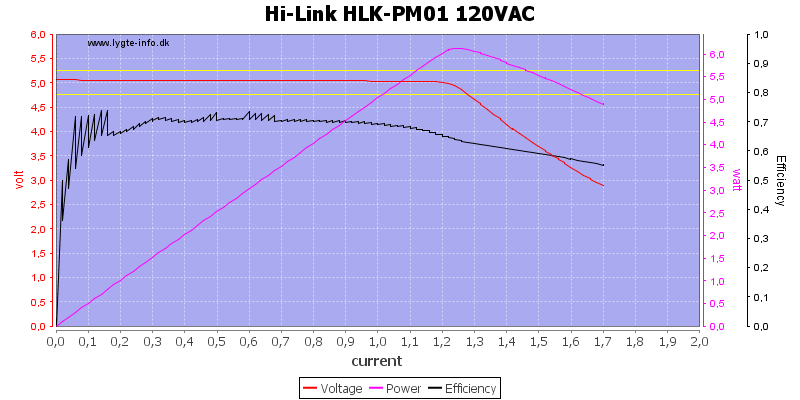
The converter can deliver 1.2A before the output starts dropping and it turns off at 1.7A with 120VAC supply.
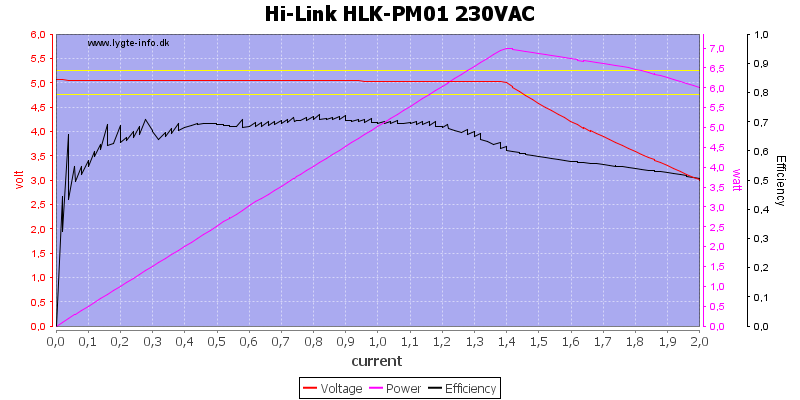
With 230VAC supply the converter can deliver a bit more, here the output first drops at 1.4A.
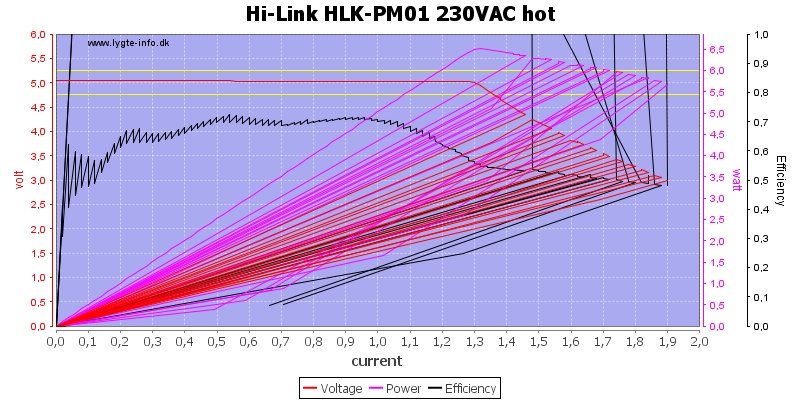
With the converter hot after some load tests I tried doing a load sweep again. The maximum current is a bit lower and now it will shut down for short periodes when overloaded (That is all the lines to 0,0).
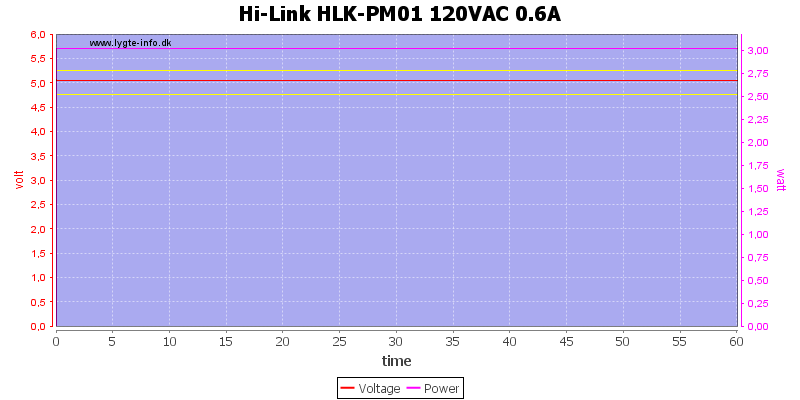
There is no problem running for one hour at rated load with 120VAC mains.
I did the IR images below after about 45 minutes:
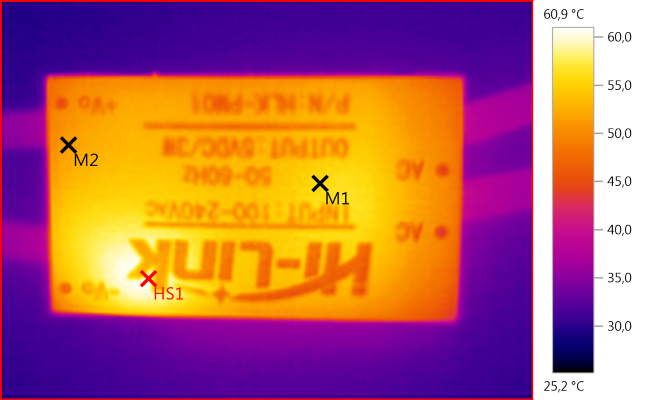
M1: 55,5°C, M2: 51,3°C, HS1: 60,9°C
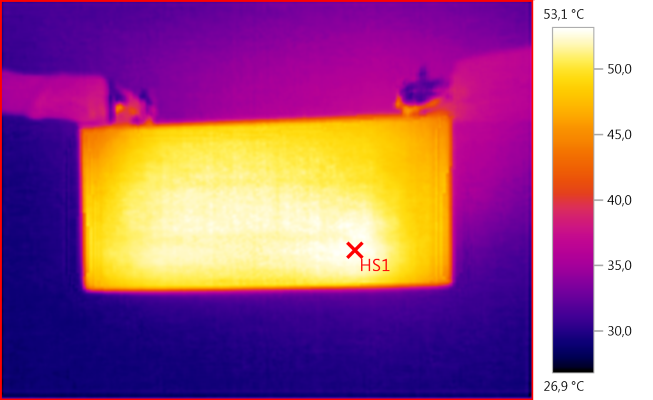
HS1: 53,1°C
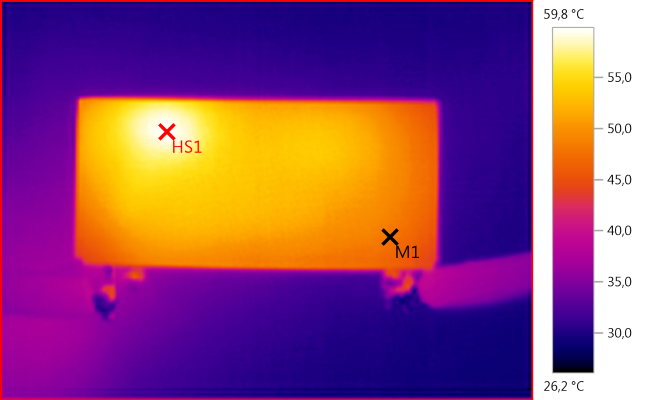
M1: 47,9°C, HS1: 59,8°C
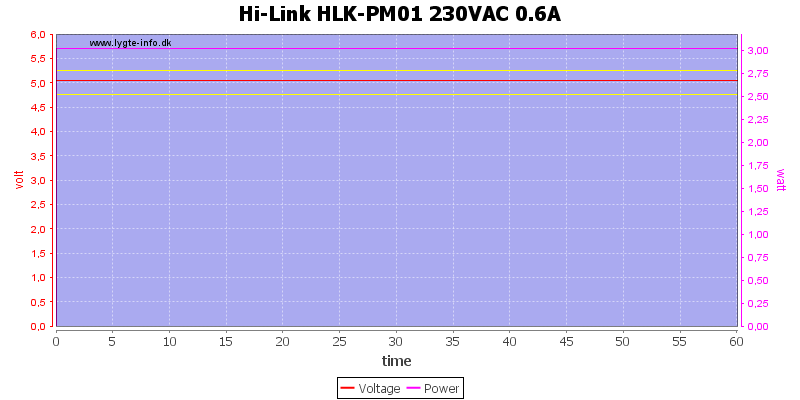
Neither is there any problem at 230VAC mains.
I did the IR images below after about 45 minutes:
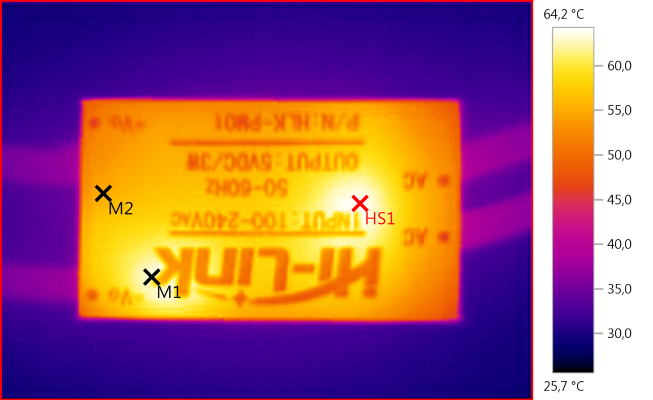
M1: 63,3°C, M2: 55,1°C, HS1: 64,2°C
It got slightly hotter at 230VAC.
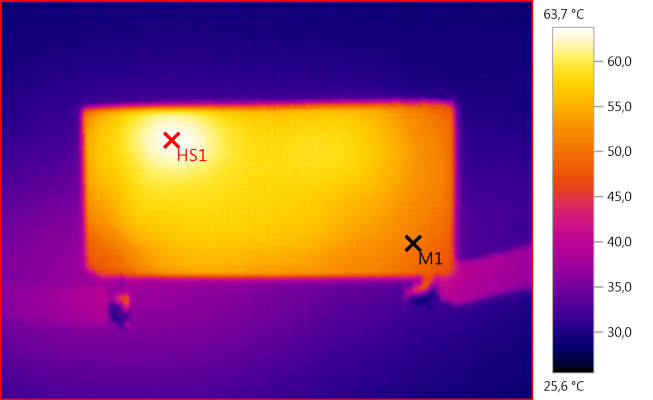
M1: 50,8°C, HS1: 63,7°C
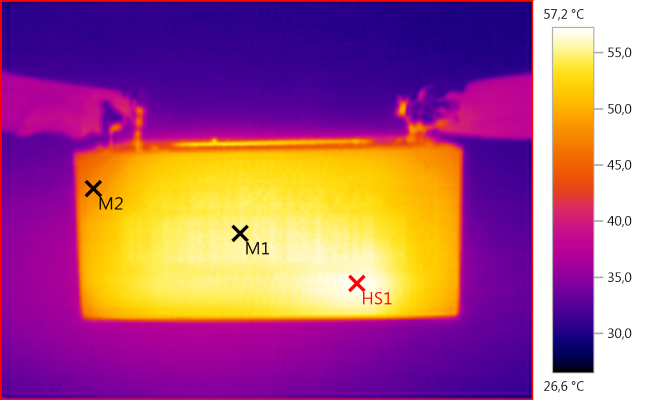
M1: 55,5°C, M2: 47,9°C, HS1: 57,2°C

Running at double rated current made it shut down after about 17 minutes.
I took the below image just after it shut down:
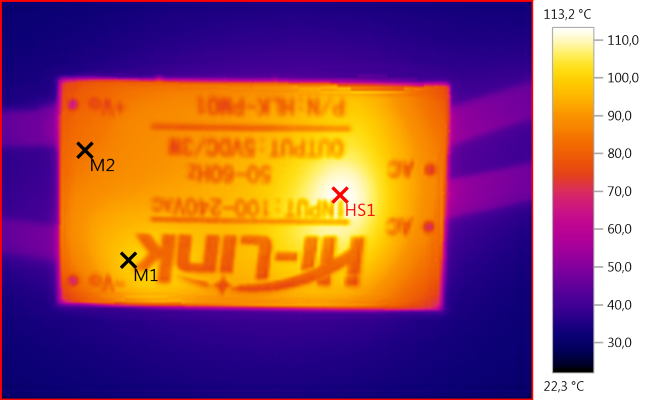
M1: 99,2°C, M2: 84,5°C, HS1: 113,2°C
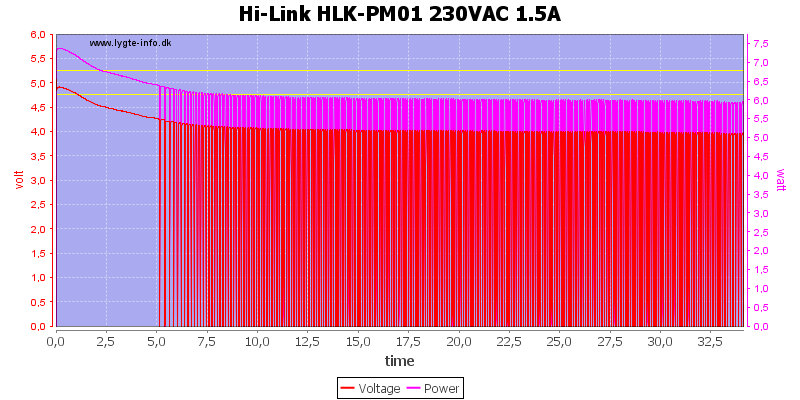
How does it work with continuous overload? I used 1.5A and then used the IR camera with a couple of times during the above half hour.
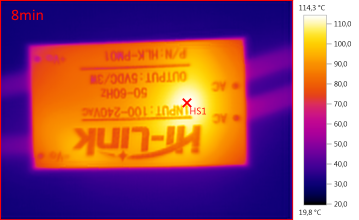
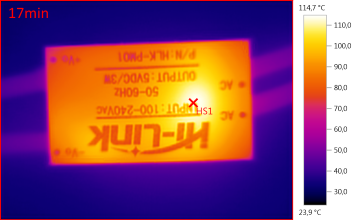
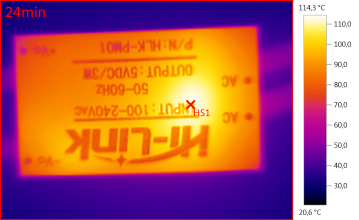
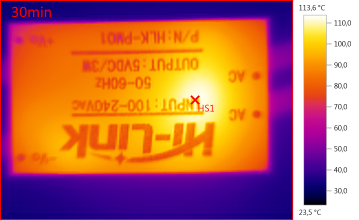
The module keeps a constant temperature. Each picture is marked with how far into the test I tok it.
This temperature will kill the module, but it will take some time.
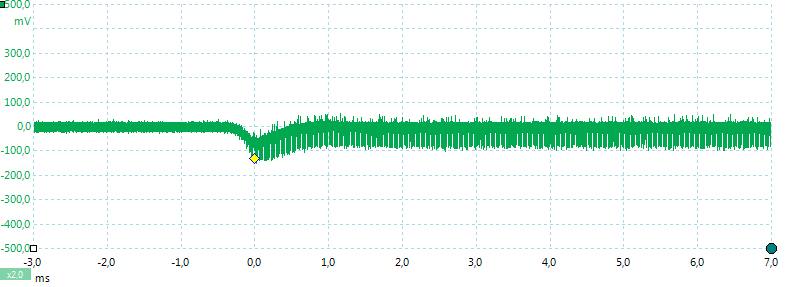
The output voltage has a short 0.1 volt drop when going from zero load to 0.6A.
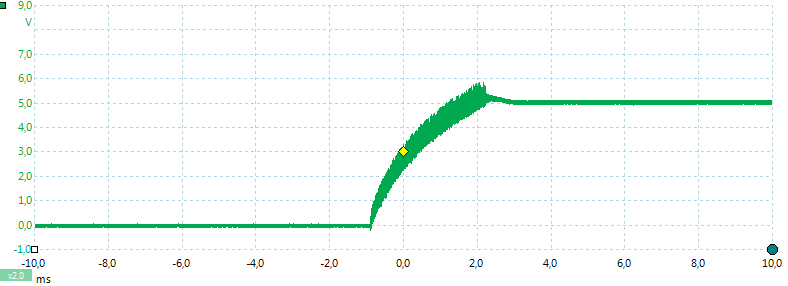
Power on takes about 3ms, but it will depend on where in the mains cycle the power is applied.

There is not much noise: 10mV rms and 120mVpp (These values are not measured in the above scope picture, but in another with higher sensitivity).
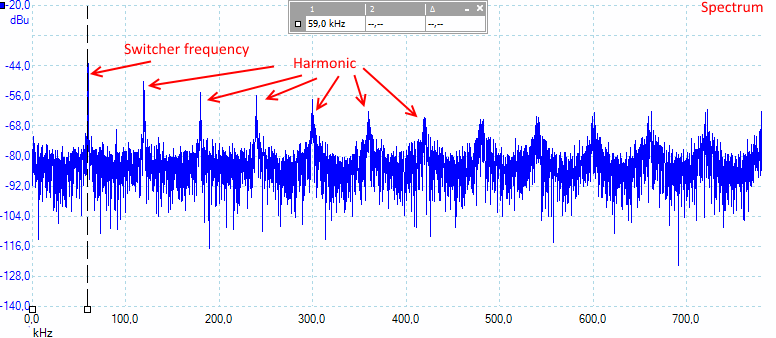
The switcher works at around 60kHz.

Increasing the load will increase the noise: 14mV rms and 180mVpp.
Tear down
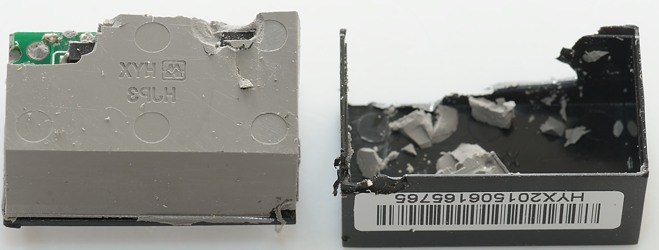
The inside of the module is filled up with something that could mostly be removed without using tools.
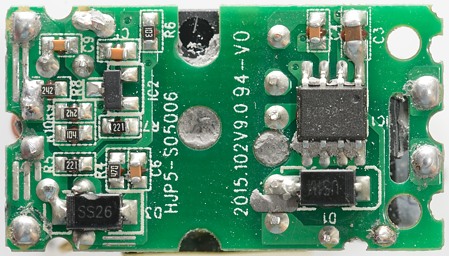
This side of the circuit board has the mains switcher (IC1/AP8012), the rectifier diode (D3) and the feedback voltage IC (IC2).
In the hole beside R6 the optical feedback chip can be seen.
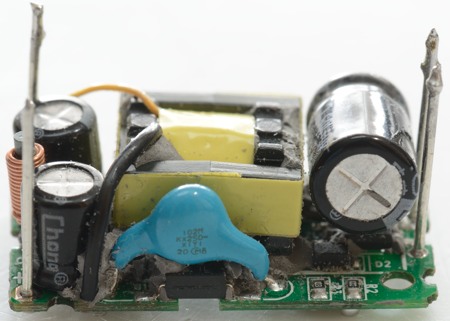
Here the safety capacitor and the optical feedback chip can be seen.
Below the mains capacitor, just behind the D2 text is the bridge rectifier.
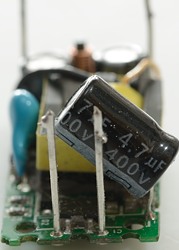
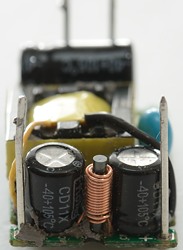
Another look at the bridge rectifier and a output inductor, placed between the two output capacitors.
Note that all capacitors are rated 105°C, this is fine as long as the module is not overloaded, but an overload will wear down the capacitors.
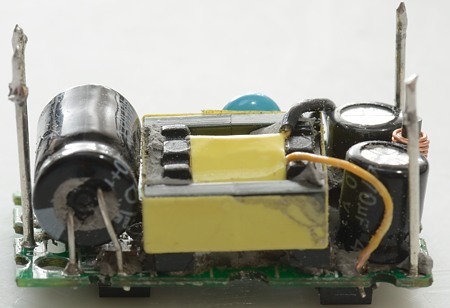
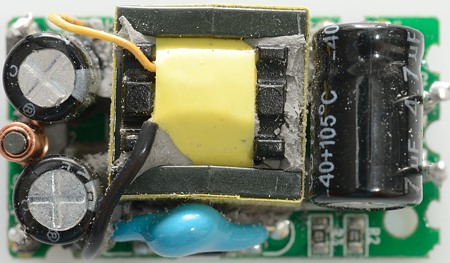
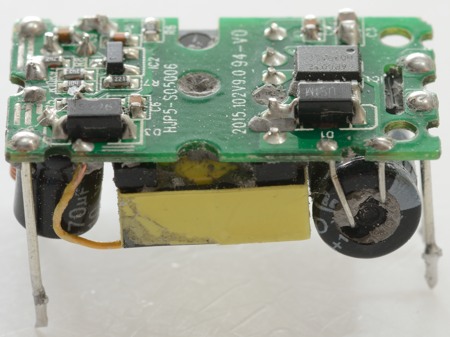
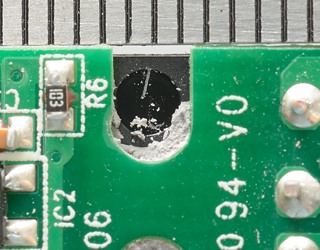
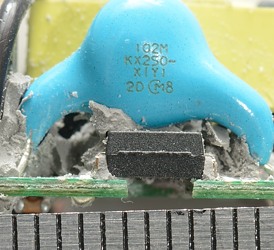
The isolation distance on the circuit board is large enough, but the optoupler is a bit below 6mm, to fix this a cutout has been added to the circuit board. This increases the creapage distance.
Testing with 2500 volt and 5000 volt between mains and low volt side, did not show any safety problems.
Conclusion
This module looks good, I did not find any problems with it.
A few notes for using it:
Electronic wears down faster when warm, especially capacitors, i.e. keep it as cool as possible for long lifetime.
I would place a fuse or fusible resistor before the converter, the fuse is not supposed to be replaceable, when it blows it is time to replace the converter.
A MOV accross the mains input would probably also be a good idea.
Notes
This converter was supplied by some readers for test.
I have mostly followed my USB power test procedure (But included a few extra tests):
Read more about how I test USB power supplies/charger




































